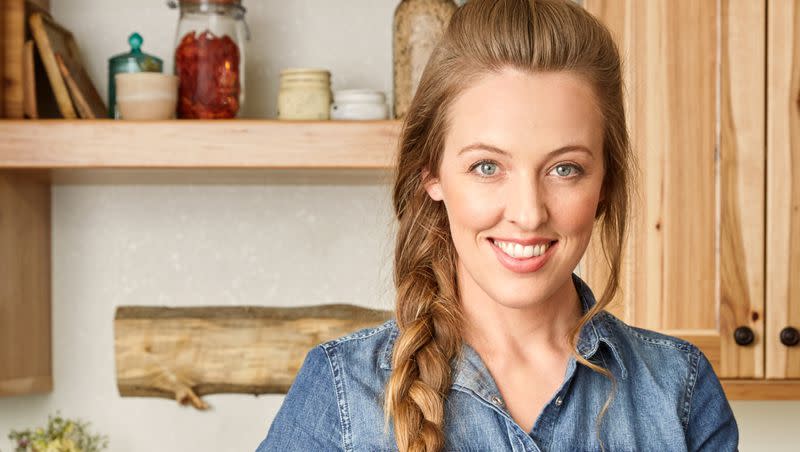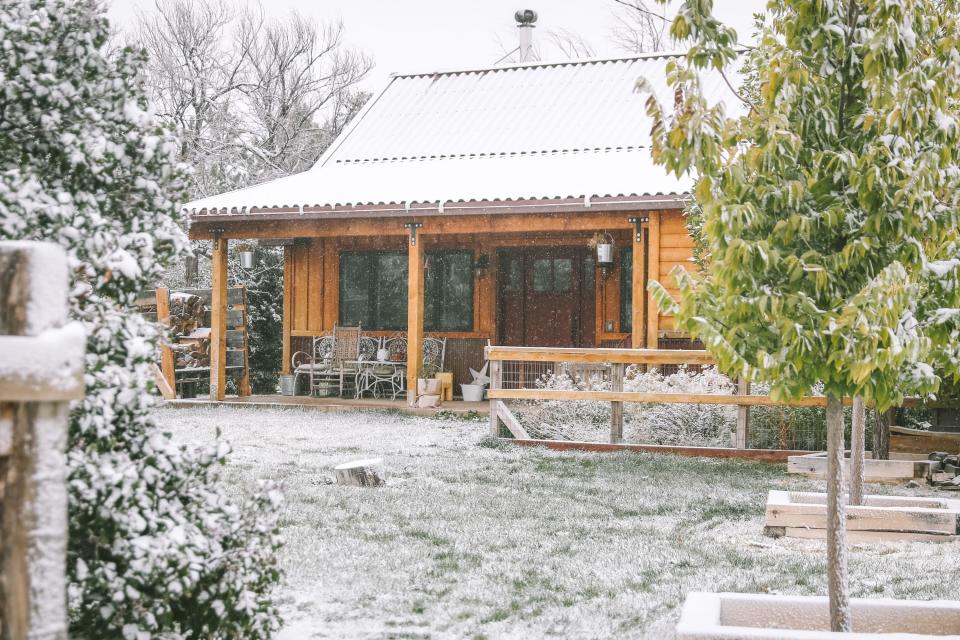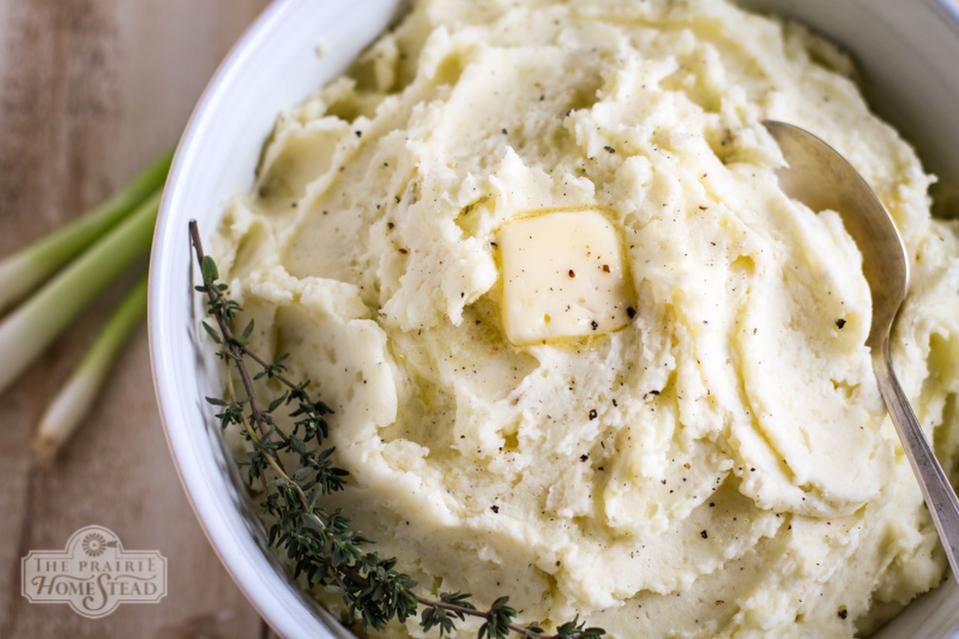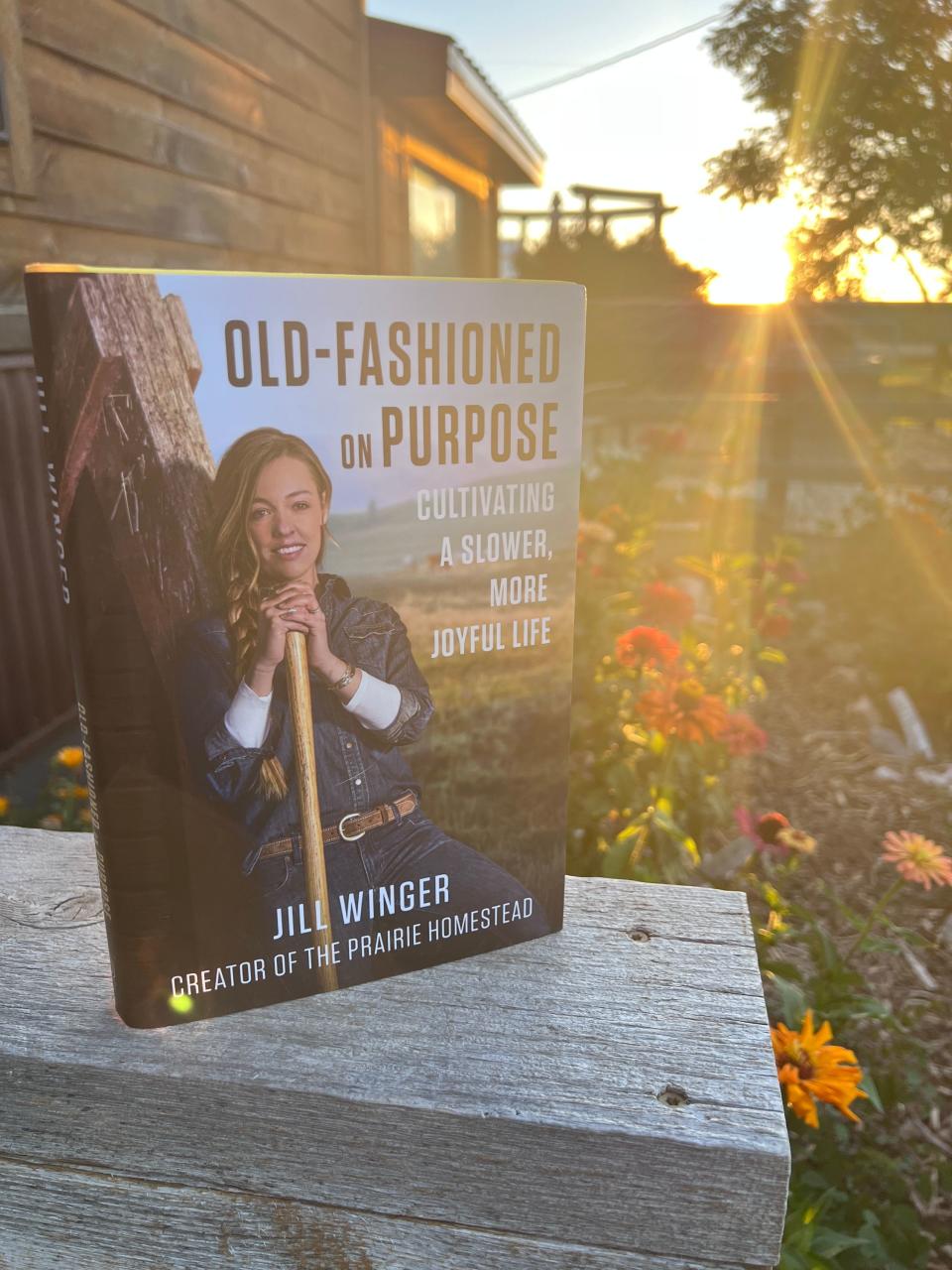Christmas house on the prairie: A conversation with homesteader Jill Winger

Jill Winger is at the forefront of two different but connected movements: homesteading and simplicity. The mother of three lives on a cattle farm in Wyoming with her husband and children and has built a career that combines an “old-fashioned” lifestyle with the latest technology. She talks of “reclaiming what modern life has taken from us” on that most modern of platforms, Instagram.
In her new book, “Old-Fashioned on Purpose,” Winger writes of “stripping away the baggage of our modern lives, recognizing the problems of progress, moving through this world with intention, resisting rampant consumerism, living lightly and consciously, and being rooted in community.”
“If I could give everyone five acres and a milk cow, I would,” she says.
But even as she’s built a career as a sort of homesteading influencer, a term laden with contradictions, Winger contends that homesteading is as much of a mindset as a way of life, one that people can adopt even if they don’t have land or cows. It’s about reclaiming the mindset of our ancestors — “meaningful ideas that have been discarded in the name of progress.”
She writes of sitting in a century-old church near Chugwater, Wyoming, and feeling connected to all the generations of people who had worshipped there. “I think this is why I love old things and old places so much. ... This sacred space has seen it all, and yet it remains — strong and steady. The real things haven’t changed.”
Winger, 38, spoke with the Deseret News about why the 19th-century practice of homesteading has so much appeal in the 21st century, how she resists consumerism in favor of an old-fashioned Christmas, and that most pressing question for parents every December — how many presents a child should get.
The interview has been edited for clarity and length.
Related
Deseret News: For people who aren’t familiar with the homesteading movement, can you explain what modern homesteading is?
Jill Winger: There’s a lot of different definitions; you can get really technical — someone with this many acres and this type of farm animal. I prefer a more abstract definition. I see modern homesteading as a way in which we, as modern people, can live with more awareness and more intention. That can be done whether you’re living in the suburbs, or New York City, or you’re off on the Wyoming prairie like I am. It’s about finding more joy and being more intentional.
DN: Why do you think there’s so much interest in this these days? You have hundreds of thousands of followers on social media.
JW: We as humans tend to swing on the pendulum. We like extremes. And while the simpler life was default since the beginning of time, since the Industrial Revolution, we’ve become so enamored with progress and technology. That’s not all bad. I’m not anti-technology. But we’re starting to see the fruits of those extremes, of being so obsessed with progress, and putting technology and convenience into so much of our life, I think many of us are hearing that little call to go, what’s real? What’s important? What actually makes me feel good? And there’s pieces of our biology that light up when we honor that — little bits of reward that draw us deeper and deeper.
DN: How did the COVID-19 pandemic play into this desire?
JW: That was a fascinating thing to watch. I make a living teaching homesteading online, and when COVID first hit, I looked at my husband and said, “I don’t think we’re going to have a business.” Silly me. Shockingly, it exacerbated people’s wanting to live with intention, which I never saw coming. Whenever society starts to feel shaky or uncertain — we see this throughout history — people go back to the land. They go back to their roots. They go back to what they know to be true. And COVID was one of the most tumultuous times many of us can remember. It felt horrible, it felt shaky, and people were like, we gotta do something different.

DN: We’re getting close to Christmas — can you tell me a little bit about how important Christmas is to your family?
JW: Christmas is a highlight, but we also live very seasonally just because of the homestead. We’re more connected to nature than maybe the average modern family. At Christmas, there’s this slowing down that we look forward to, like the dark winter nights; we all cozy up as a family; we have woodstoves, we’re sitting by the fire, we’re lighting candles. Christmas is wrapped into that winter vibe. We look forward to that (season) as much as Christmas itself.
DN: How have your Christmas traditions have changed as you have gotten deeper into this “old-fashioned” lifestyle?
JW: We ask ourselves all year, not just at Christmas, how can we be less consumer-driven. That’s such a force in our lives, 365 days a year. But especially around Christmas, there’s such a push: consume, consume, consume, more, more, more. We still do gifts; we still do decorations. But it always felt a little icky to me; why do I have to spend so much money? What if we got back to simplicity and peace and togetherness? So we keep our decorations simple and nature-driven.
We’re on the prairie, so trees are kind of luxury. So we have a fake tree, which is a sticking point for me, because I don’t like fake things, but I don’t want to cut down a prairie tree. But I have a couple of evergreen shrubs in the yard that I baby all year and will cut little branches off them for displays on the tables and countertops. Even things like pinecones and branches.
One of my favorite decorations is oranges — it’s old-fashioned and really affordable and when you’re done with them you can put them in the compost pile or give them to the chickens so they’re not going in the trash can. I get regular oranges and cut them thinly and dry them in the oven, or dehydrator if you have one. And then take string or twine and poke a hole in the orange flesh once it’s dried and make a loop, and then you can hang it on the tree. I like to take old or rusty buckets, and arrange pine boughs and branches and orange slices. They smell great; you don’t have to burn the fake candles; you get a natural scent.
DN: What’s another easy decoration that you enjoy doing?
JW: I like to do popcorn garlands with popcorn and cranberries. It’s quaint, but there’s just a charm to that because it’s not plastic. And when you’re done with it, the animals can eat it.
DN: One issue that seems to come up every year for parents is how many gifts a child should get over the holidays. How do you and your husband come down on that issue?
JW: It’s a complicated issue. We subscribe to something that we didn’t come up with ourselves, but we give three gifts per child: something they want, something they need, and something to read. I like that. We still have relatives who will give gifts to the kids; that’s just what my husband and I do. That keeps things manageable.

DN: What about food traditions at Christmas? What do you do?
JW: Food is one of my favorite things; I like food natural, from scratch. For us, it’s about homemade as much as possible, and simple. I love to give food gifts, so we work on that throughout the year. And then we have kind of a funny tradition on Christmas Day. A lot of people do ham and potatoes, a traditional dinner. But because we raise our own food, we eat ham and potatoes and turkey a lot anyway. It’s not as special for us. So I make broccoli and shrimp Alfredo. To invest in some good, high-quality shrimp is a treat for us. So that’s our Christmas — it’s different and quirky, but that’s what we do.
DN: What about New Year’s? Do you have any special traditions then?
JW: The week between Christmas and New Year’s is my favorite week of the year. I absolutely love it. I get this tremendous burst of energy; I clean and reorganize, and I like to spend a lot of time sitting with a journal, planning and dreaming. There’s something about the energy of that week that’s really powerful for me, so I guard that week, and I make sure it’s blank, and I spend the time planning and dreaming about what’s coming next.
DN: So what is coming next, in 2024?
JW: My husband and I are talking about pruning ... we hit the old-fashioned life so hard, that now we’re thinking, how can we simplify even more? What can we pare out to make room for more focus on the things that matter most? We all roll forward and get into ruts without realizing it. Self-examination is key.
One of my favorite tricks is what some people call the 80-20 rule, some people call it the Pareto rule. It says that 20% of the activities give us 80% of the joy. It works for Christmas, too. Because there’s this push at Christmas to do everything, and that’s stressful. So I look at, what’s the 20% that’s going to give us the amazing memories and what’s the 80% that maybe we’re just doing as filler, or for obligation. So we can cut and prune and decline the rest gracefully. It works really good at Christmas, and it works really good the rest of the year. That’s what I try to follow.


